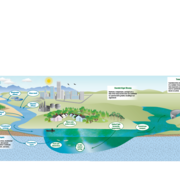The Environmental Health Program's Science Approach is Based on the Principle that Human and Animal Health are Interdependent and Linked to the Health of the Ecosystems they Share
Integrated Science Teams
Work together in the field and laboratories across the United States
Questions We Answer
Examples of how our scientists answer high priority environmental health science questions
Video Presenting the USGS Laboratory for Per- and Polyfluoroalkyl Substances (PFAS)
Located at the Eastern Ecological Science Center
Environmental Health Program
The Environmental Health Program (Contaminant Biology and Toxic Substances Hydrology) supports integrated natural science expertise and capabilities across the USGS related to environmental contaminants and pathogens. This One Health approach recognizes the interdependence of human and animal health and the health of ecosystems that they share.
Integrated Science

Science centers and scientists supported by the Environmental Health Program work together on integrated science teams to develop and apply advanced laboratory methods, field investigations, and modeling to understand sources, fate, exposure, toxicity, and effects of environmental contaminants and pathogens.





